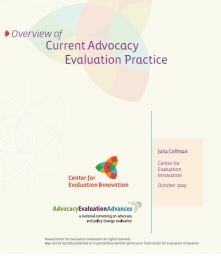
Overview of Current Advocacy Evaluation Practice
This brief offers an overview of current practice in the new and now rapidly growing field of advocacy evaluation. It highlights the kinds of approaches being used, offers specific examples of how they are being used and who is using them, and identifies the advantages and disadvantages of each approach.
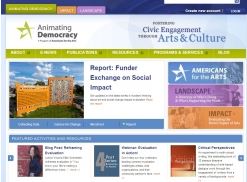
Animating Democracy | IMPACT
Animating Democracy, a program of Americans for the Arts, has an online storehouse of resources aimed at helping arts organizations evaluate the social impact of creative work that aims to make social change. Although the site is intended for arts-focused organizations, many of the resources offered are applicable to the work of a wide variety of service agencies interested social change work.
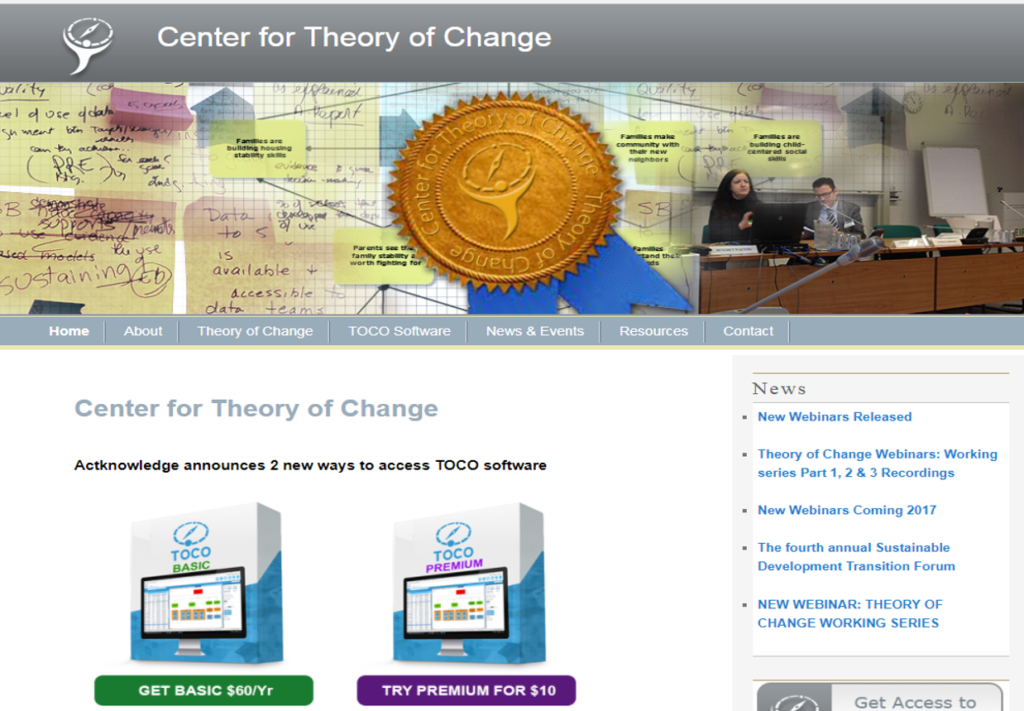
Theory of Change
Theory of Change is a method or technique that can assist communities to think about, plan and evaluate their work. It involves backwards mapping from the goals or desired outcomes of the program to identify what is needed in the program design to accomplish these goals. This website offers in depth resources, guides, and examples for how to develop and apply a TOC.
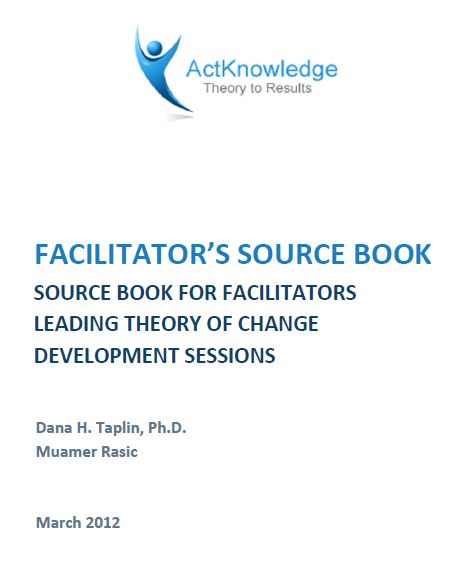
Theory of Change Facilitator Source Book
This facilitator source book defines Theory of Change vocabulary, offers suggestions for preparation for group process, and provides a step-by-step explanation of what it takes to design a Theory of Change.

Social Service to Social Change: A Process Guide
In 2006, the Building Movement Project published Social Service to Social Change: A Process Guide for staff and board members of nonprofit organizations to learn to incorporate social change values and practice into their work. While it has many activities, understanding the “Transformation Process” on page nine is foundational to making lasting change.
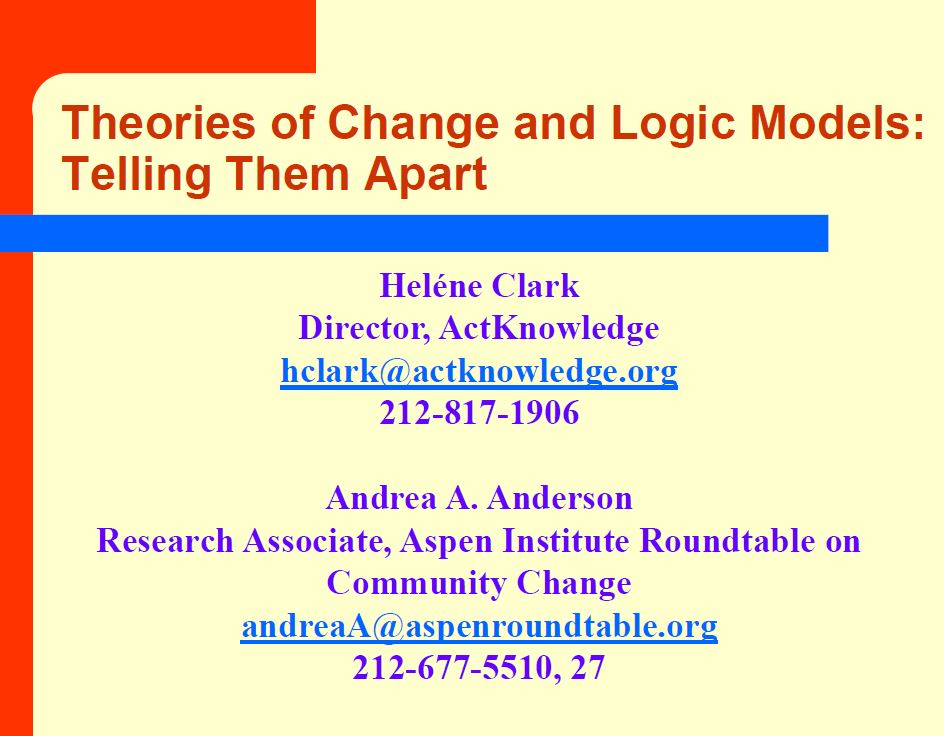
Theories of Change and Logic Models: Telling Them Apart
A logic model can be used separately or in addition to a TOC, though the focus of a logic model is more programmatic. Two sources are offered here: (1) a guide to developing a logic model and, (2) a presentation that helps distinguish between the two.
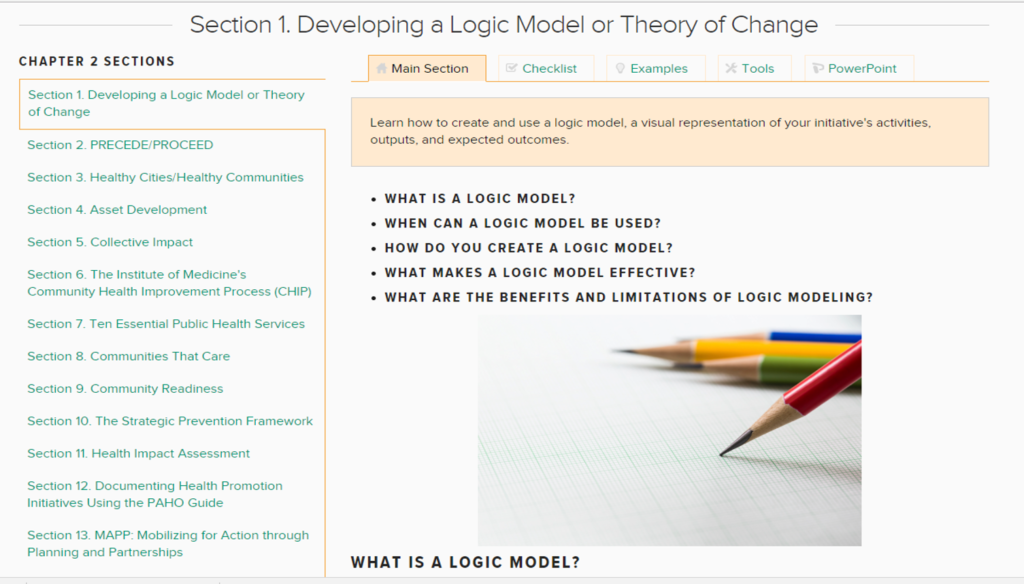
Developing a Logic Model or Theory of Change
This section of “Other Models for Promoting Community Health and Development,” from the Community Tools Box, answers the following questions:
1) What is a logic model?
2) When can a logic model be used?
3) How do you create a logic model?
4) What makes a logic model effective?
5) What are the benefits and limitations of logic modeling?
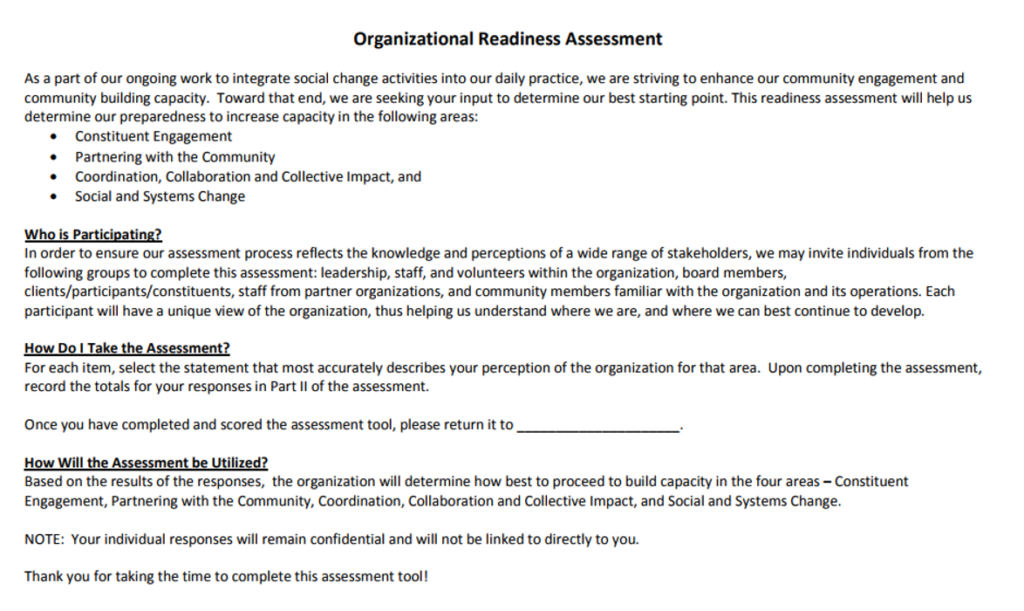
Organizational Readiness Assessment
The Organizational Readiness Assessment is designed as a tool to help organizations explore the status of their vision and mission, their relationship to staff, partners and constituents, and their leadership approach as part of an organizational culture conducive to social change efforts.
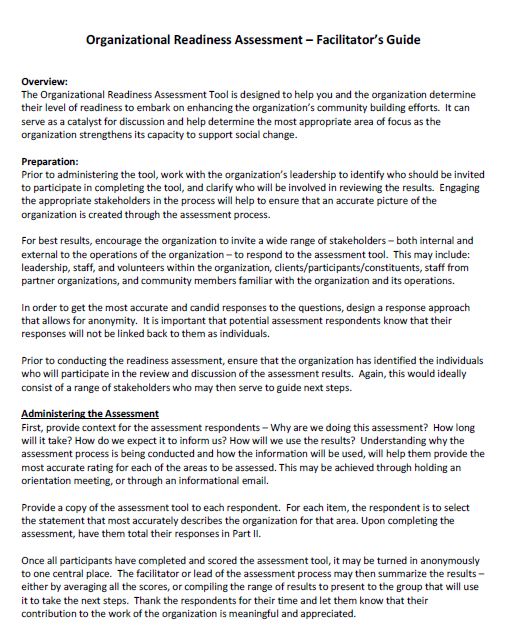
Organizational Readiness Assessment-Facilitators Guide
This guide is for facilitators administering the Organizational Readiness Assessment Tool.
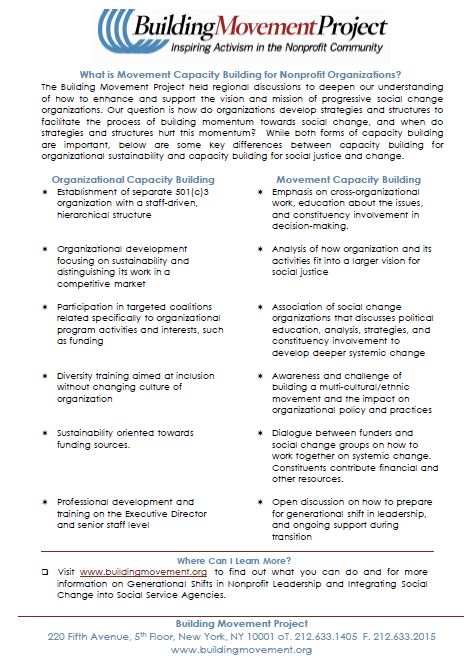
Organizational v. Movement Building Capacity: A Fact Sheet for Differentiating Between the Two
This fact sheet from BMP highlights some key differences between capacity building for organizational sustainability and capacity building for social change. It identifies nine areas identified as important building blocks of social movement capacity for nonprofit organizations.
